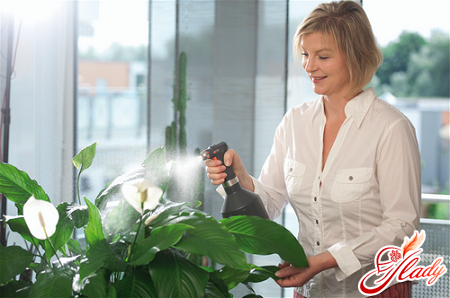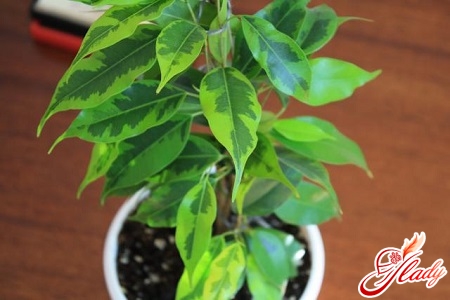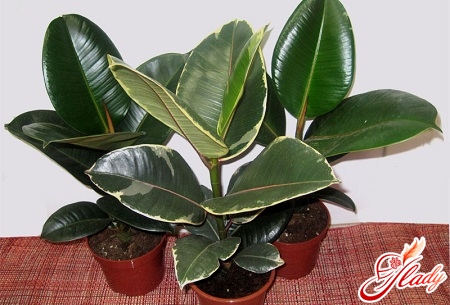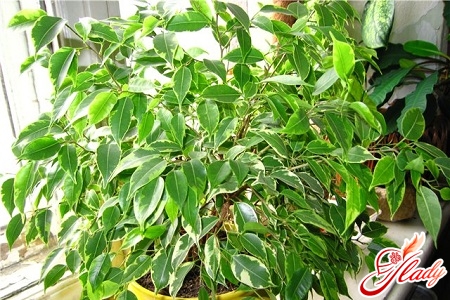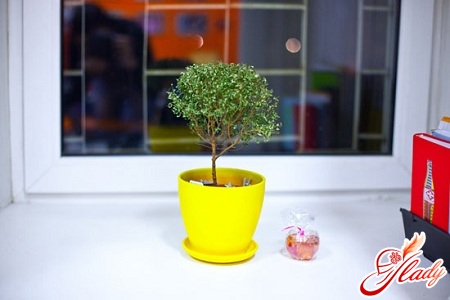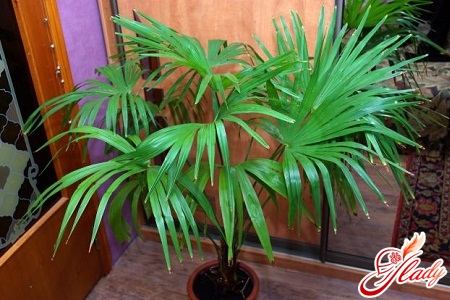 Add to your collection of indoor flowersa real live palm tree? Why not? Indoor palm trees are unpretentious plants, it is not that difficult to take care of them, and it is not worth talking about how impressive this tree will look in the house. True, they have one drawback - an indoor palm tree grows very large. But they do not reach their gigantic size soon. So you will have to enjoy the view of a small and neat palm tree for a long time. The only thing left is to choose the right type of palm tree and learn how to take care of it. All types of indoor palm trees are divided into two main groups (by leaf shape): pinnate-leaved (date palm, coconut, chamaedorea, howea) and fan-leaved (trachycarpus, chamaerops, Livistona palm). What are they? The date palm (genus Phoenix) has as many as seventeen species. In the wild, it grows mainly in Africa and India. But the popular house palm "date palm" does not exist in the wild. This tree with a columnar "shaggy" trunk eventually grows to the ceiling! Its leaves are dark green, pinnate, curved in an arc and can reach six meters in length. By the way, this particular palm tree is easy to grow from a dried date seed, which will definitely germinate in an ordinary flower pot (though it will take a lot of time). And this tree will acquire a more or less decorative appearance only after five to seven years. Therefore, a date palm with inedible fruits - the Robeleni date palm - is more suitable for indoor growing. This is a low (up to two meters) decorative tree with a lush crown, gracefully curved leaves and an indispensable attribute of a palm tree - a "shaggy" trunk (and sometimes with several trunks). Areca is a beautiful palm tree that came to us from the tropical forests of India. It has a flexible trunk, ringed with many characteristic scars (remnants of leaf petioles). And the crown of the areca is a powerful bunch of feathery leaves on the "top" of the trunk. In room conditions, it grows up to two meters in height, and its leaves reach a meter in length. Trachycarpus is considered the most adapted to indoor conditions variety of indoor palms. This is a palm with a straight "bottle-shaped" trunk and huge fan-shaped leaves-vanes. It is noteworthy that Trachycarpus blooms with fragrant white or yellow flowers and even bears fruit - blue-black berries. Two of its species are best known: Trachycarpus Martius and Trachycarpus Fortune. The genus Caryota also complements the varieties of indoor palms. This amazing tree is very different in appearance from its fellow "palm tribe". The unique leaves of this palm have the shape of an elongated triangle, the wide ends of which seem to be specially, but carelessly torn off. In addition, this is the fastest growing tree of all indoor palms, but it lives a relatively short time - about twenty years. The coconut palm is not the best option for home cultivation. It is very, very light-loving, and therefore more suitable for winter gardens and greenhouses. Indoors, only the Weddel's coconut and the nut-bearing coconut are usually kept. Such palms as Howea belmore and Howea fosteriana, all types of Chamaedorea, Livistona palm, and Chamaerops squat are excellent for home cultivation.
Add to your collection of indoor flowersa real live palm tree? Why not? Indoor palm trees are unpretentious plants, it is not that difficult to take care of them, and it is not worth talking about how impressive this tree will look in the house. True, they have one drawback - an indoor palm tree grows very large. But they do not reach their gigantic size soon. So you will have to enjoy the view of a small and neat palm tree for a long time. The only thing left is to choose the right type of palm tree and learn how to take care of it. All types of indoor palm trees are divided into two main groups (by leaf shape): pinnate-leaved (date palm, coconut, chamaedorea, howea) and fan-leaved (trachycarpus, chamaerops, Livistona palm). What are they? The date palm (genus Phoenix) has as many as seventeen species. In the wild, it grows mainly in Africa and India. But the popular house palm "date palm" does not exist in the wild. This tree with a columnar "shaggy" trunk eventually grows to the ceiling! Its leaves are dark green, pinnate, curved in an arc and can reach six meters in length. By the way, this particular palm tree is easy to grow from a dried date seed, which will definitely germinate in an ordinary flower pot (though it will take a lot of time). And this tree will acquire a more or less decorative appearance only after five to seven years. Therefore, a date palm with inedible fruits - the Robeleni date palm - is more suitable for indoor growing. This is a low (up to two meters) decorative tree with a lush crown, gracefully curved leaves and an indispensable attribute of a palm tree - a "shaggy" trunk (and sometimes with several trunks). Areca is a beautiful palm tree that came to us from the tropical forests of India. It has a flexible trunk, ringed with many characteristic scars (remnants of leaf petioles). And the crown of the areca is a powerful bunch of feathery leaves on the "top" of the trunk. In room conditions, it grows up to two meters in height, and its leaves reach a meter in length. Trachycarpus is considered the most adapted to indoor conditions variety of indoor palms. This is a palm with a straight "bottle-shaped" trunk and huge fan-shaped leaves-vanes. It is noteworthy that Trachycarpus blooms with fragrant white or yellow flowers and even bears fruit - blue-black berries. Two of its species are best known: Trachycarpus Martius and Trachycarpus Fortune. The genus Caryota also complements the varieties of indoor palms. This amazing tree is very different in appearance from its fellow "palm tribe". The unique leaves of this palm have the shape of an elongated triangle, the wide ends of which seem to be specially, but carelessly torn off. In addition, this is the fastest growing tree of all indoor palms, but it lives a relatively short time - about twenty years. The coconut palm is not the best option for home cultivation. It is very, very light-loving, and therefore more suitable for winter gardens and greenhouses. Indoors, only the Weddel's coconut and the nut-bearing coconut are usually kept. Such palms as Howea belmore and Howea fosteriana, all types of Chamaedorea, Livistona palm, and Chamaerops squat are excellent for home cultivation.
Conditions of detention
Almost all indoor palms requirethe same conditions of maintenance. Most of them will first of all need a spacious room. Because even if your palm has not yet reached its impressive size, it will not tolerate close proximity to other indoor flowers, since in fact it is a solitary plant. Like any indoor flowers, the palm needs proper lighting, comfortable temperature and sufficient air humidity.
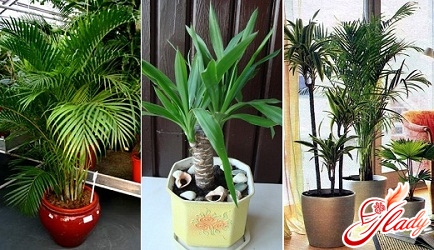
How to care for a palm tree?
Such a houseplant as a houseplantIn addition to suitable conditions, the palm also needs easy but regular care. How to care for it? Basic care for indoor palms comes down to proper watering, timely replanting, fertilizing and protection from diseases. Watering. In summer - daily and abundant, in winter - moderate. In general, the frequency and intensity of watering is directly related to the air temperature. The hotter it is, the more often and generously we water the palm. However, over-watering is also undesirable for it. The soil in the flower pot should be moist all the time, but only slightly. I replant palms as they grow. Young and actively growing trees - annually, older ones - less often. The need for replanting is determined by the tightness of the pot. From a flower pot that has become small, the palm is replanted in the spring into a more spacious cylindrical container. The new pot should be slightly larger than the previous one. The replanting itself is carried out according to the general rules of indoor floriculture. Like other indoor flowers, palms need to be fed. Young or newly transplanted trees do not need feeding for the first six months. Adult palms are fertilized during the period of active growth (March-September) once a week. They are fed with regular flower fertilizers according to the instructions on the package. As you can see, the unpretentious indoor palm requires almost minimal care. If you take care of it properly, your palm will not get sick. However, such troubles are still possible. The so-called diseases of indoor palms:
- Brown (dry) leaf tips. Cause: dry air, insufficient watering. Treatment: regular watering, spraying, trimming of dried tips.
- Yellowing foliage. Cause: insufficient watering.
- Rusty spots on the leaves. The reason is the overmoistening of the soil, watering with hard water, a sharp drop in temperature.
- Drying of young leaves. The reason is the excess of sunlight. Treatment is the shading of the plant.
- Stopped growing. Cause: too cold and damp room, lack of nutrients. Treatment: move the plant to a warm place, fertilize.
- Drying of the lower leaves. The natural process. Such leaves are simply removed, neatly cutting off the trunk.
Here is such an interesting indoor flower, a palm tree – a spectacular, large and unpretentious plant. A small piece of tropical forest in a tub. We recommend reading:




